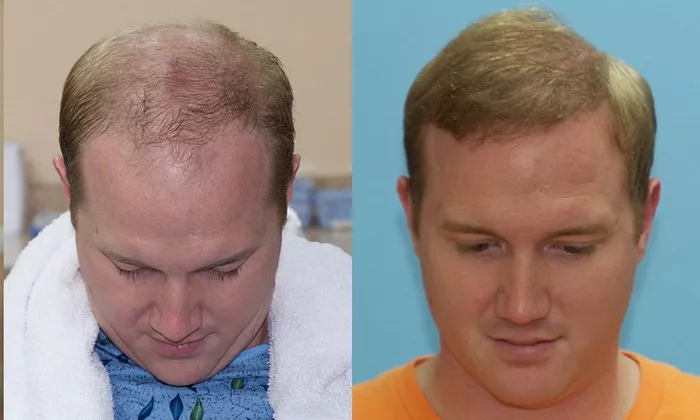Follicular Unit Extraction (FUE) is a popular hair transplant procedure known for its minimally invasive nature and effective results. However, post-procedure care is critical to ensure optimal outcomes and prevent complications. One common question among FUE patients is, “When can I wear a baseball hat after FUE?” This article will delve into the details of FUE, the healing process, and guidelines for wearing headwear post-procedure to ensure a smooth recovery and the best possible results.
What is FUE?
FUE involves extracting individual hair follicles from a donor area, usually the back of the head, and transplanting them to the balding or thinning areas. Unlike traditional strip harvesting, FUE leaves minimal scarring and has a quicker recovery time. Despite its advantages, it still requires careful post-operative care to avoid damaging the newly transplanted follicles and ensure they take root successfully.
The Importance of Post-FUE Care
The first few weeks after an FUE procedure are crucial for the survival and growth of the transplanted hair follicles. Proper care helps prevent infections, minimize swelling, and ensure that the grafts take hold properly. Activities that might seem harmless, such as wearing a hat, can potentially disrupt the healing process if not done at the right time or in the right manner.
Immediate Post-Procedure Period (0-3 Days)
The Critical Healing Phase
In the first 72 hours following your FUE procedure, your scalp is in a highly sensitive state. The grafts are fresh and have not yet secured themselves in their new locations. During this time, it’s essential to avoid any pressure or friction on the scalp. This means:
No hats or head coverings: Even loose-fitting hats can cause irritation or dislodge grafts.
Minimal physical activity: Avoid strenuous activities that cause sweating or increase blood flow to the scalp.
The First Week (4-7 Days)
Gradual Introduction to Light Activities
After the initial three days, the grafts begin to settle, but they are still vulnerable. Light activities can be gradually resumed, but you should still avoid any direct contact with the grafts. Wearing a hat is not recommended during this period as it can still cause friction and pressure on the grafts.
The Second Week (8-14 Days)
Beginning to Wear Headwear Cautiously
By the second week, the grafts are more stable, and the risk of dislodging them decreases significantly. However, caution is still needed when considering wearing a baseball hat.
Type of Hat: Choose a hat that is loose-fitting and made from breathable materials. Avoid tight hats that can compress the scalp.
Duration: Limit the amount of time you wear the hat. Start with short periods and gradually increase the duration as you monitor your scalp’s response.
Cleanliness: Ensure the hat is clean to prevent infections. Washing the hat before wearing it is advisable.
The Third and Fourth Weeks (15-30 Days)
Increasing Hat Usage Gradually
At this stage, the transplanted follicles are becoming more secure, and the risk of dislodging them is minimal. You can start wearing a baseball hat more regularly, but still with some precautions:
Avoid Tight Hats: Even though the grafts are more secure, tight hats can still cause irritation or restrict blood flow to the scalp.
Monitor Scalp Health: Pay attention to any signs of irritation or discomfort. If you notice any adverse reactions, reduce hat usage and consult your surgeon.
See Also: How Much Does NeoGraft Hair Surgery Cost?
One Month and Beyond
Resuming Normal Activities
After one month, most patients can resume wearing baseball hats and other headwear without significant restrictions. However, it’s essential to continue monitoring the scalp for any signs of irritation and to follow any additional guidelines provided by your surgeon.
Additional Tips for Wearing Hats Post-FUE
1. Choose the Right Hat: Opt for hats made of soft, breathable materials like cotton. Avoid synthetic materials that can trap heat and moisture, leading to irritation.
2. Ensure Proper Fit: A hat that is too tight can compress the scalp and hinder the healing process. Make sure your hat fits comfortably without squeezing your head.
3. Keep It Clean: Regularly wash your hat to prevent the buildup of sweat and bacteria, which can lead to infections.
4. Avoid Prolonged Wear: Even after the initial healing period, avoid wearing a hat for extended periods. Give your scalp time to breathe and recover.
5. Consult Your Surgeon: Always follow your surgeon’s specific instructions regarding post-procedure care and when it is safe to start wearing a hat.
Common Concerns and FAQs
Can Wearing a Hat Cause Infections?
Wearing a dirty hat or one that traps sweat can increase the risk of infections. It’s crucial to keep your hats clean and dry. If you notice any signs of infection, such as redness, swelling, or discharge, contact your surgeon immediately.
What If My Job Requires Wearing a Hat?
If your job requires you to wear a hat, discuss this with your surgeon before the procedure. They can provide specific advice and possibly a timeline tailored to your situation.
Can I Wear a Hat to Protect My Scalp from the Sun?
Protecting your scalp from the sun is essential after FUE. If you need to be outdoors, opt for a loose-fitting, breathable hat and limit your exposure to direct sunlight. Alternatively, use a high-SPF sunscreen designed for sensitive skin on your scalp.
Conclusion
The timeline for wearing a baseball hat after FUE varies depending on individual healing processes and the specifics of the procedure. While general guidelines suggest avoiding hats for the first two weeks, it is always best to consult with your surgeon for personalized advice. By following these guidelines and taking proper care of your scalp, you can enjoy the benefits of your FUE procedure while safely incorporating headwear into your routine.
Understanding and adhering to these post-FUE care guidelines ensures the best possible outcome from your hair transplant procedure, helping you achieve a fuller, healthier head of hair with minimal complications.


